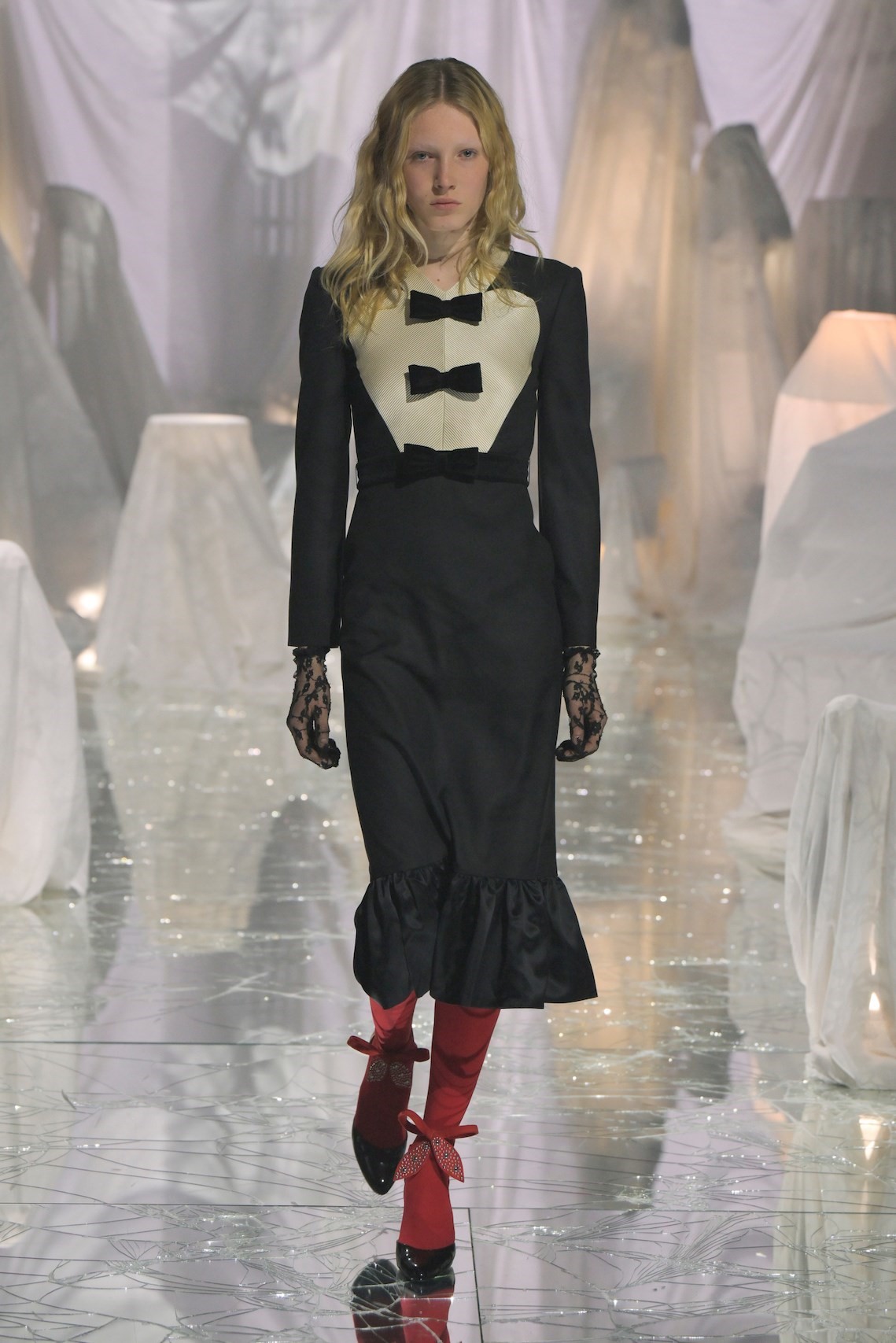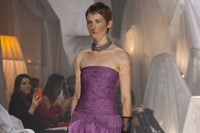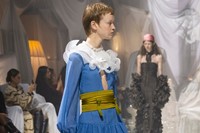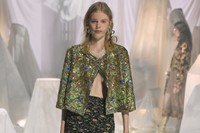Alessandro Michele showed his first collection for Valentino atop a catwalk of shattered mirror – which was apt, as his first collection represented a shattered reflection of the heritage and meaning of the Maison he’s inherited. That, perhaps, wasn’t initially evident, hewn close as this collection undeniably was to the aesthetic Michele has established as unmistakably his own. And yet, in actual fact, it was deeply coded to the Maison, if not unmistakably so.
After the show, Michele said he’d spent his first afternoon at Valentino immersed in the archive: “It was a trip.” He obviously spent many more there too. It is, after all, the foundation of the house – both metaphorically and literally, situated as it is in the bowels of the Palazzo Gabrielli-Mignanelli, Valentino’s home since 1968. “When I came here, it was really beautiful,” Michele said. “I entered someone else’s home.”
I’ve been lucky enough to spend time there myself – in 2022, I co-curated an exhibition on the heritage of the house, meaning I was embedded in those tissue-swaddled archives for months on end, pawing carefully through Valentino’s greatest hits. And they are great – made greater by the fascinating sociological fact that, when Valentino decided to build its archive in the late 80s and early 90s, they approached their clients and simply asked for their dresses back. The clients, most friends of Valentino Garavani as well as frenetic admirers of his clothes, were happy to oblige and free up space in their closet. Meaning they have clothes made for and owned by the likes of Audrey Hepburn, Jacqueline Kennedy, the Duchess of Windsor and Elizabeth Taylor, now painstakingly folded into archival boxes, to last forever. Michele kept talking about life when discussing Valentino, and these dresses had all lived their own.
They lived again in Michele’s show. Because the genius of Michele’s reconsideration of Valentino was that it was embedded, entirely, in the house’s history. Certain pieces were reproduced precisely from the house’s annals, direct sartorial quotations from, say, his spring 1990 haute couture collection, which specifically surrendered a pair of chiffon jackets entirely encrusted in sequins to create a Coromandel screen pattern. A ruffled collar in that Valentino red was sliced straight from a dress in a Deborah Turbeville advert from 1977. There was another scarlet satin top with wide black collar and harem trousers, designed for and worn by the legendary fashion editor Diana Vreeland, which Michele recreated exactly as is, and again in black with a smattering of crystal globules. That was another version of those “fragmented” archives, largely culled from the 60s, 70s and early 80s, which Michele asserted as the brand’s DNA. Pinching from all those decades at once, Michele remixed, say, a broad-shouldered bow-fronted jacket by smothering it in a cacio e pepe of polka dots nicked from a bustled evening dress.
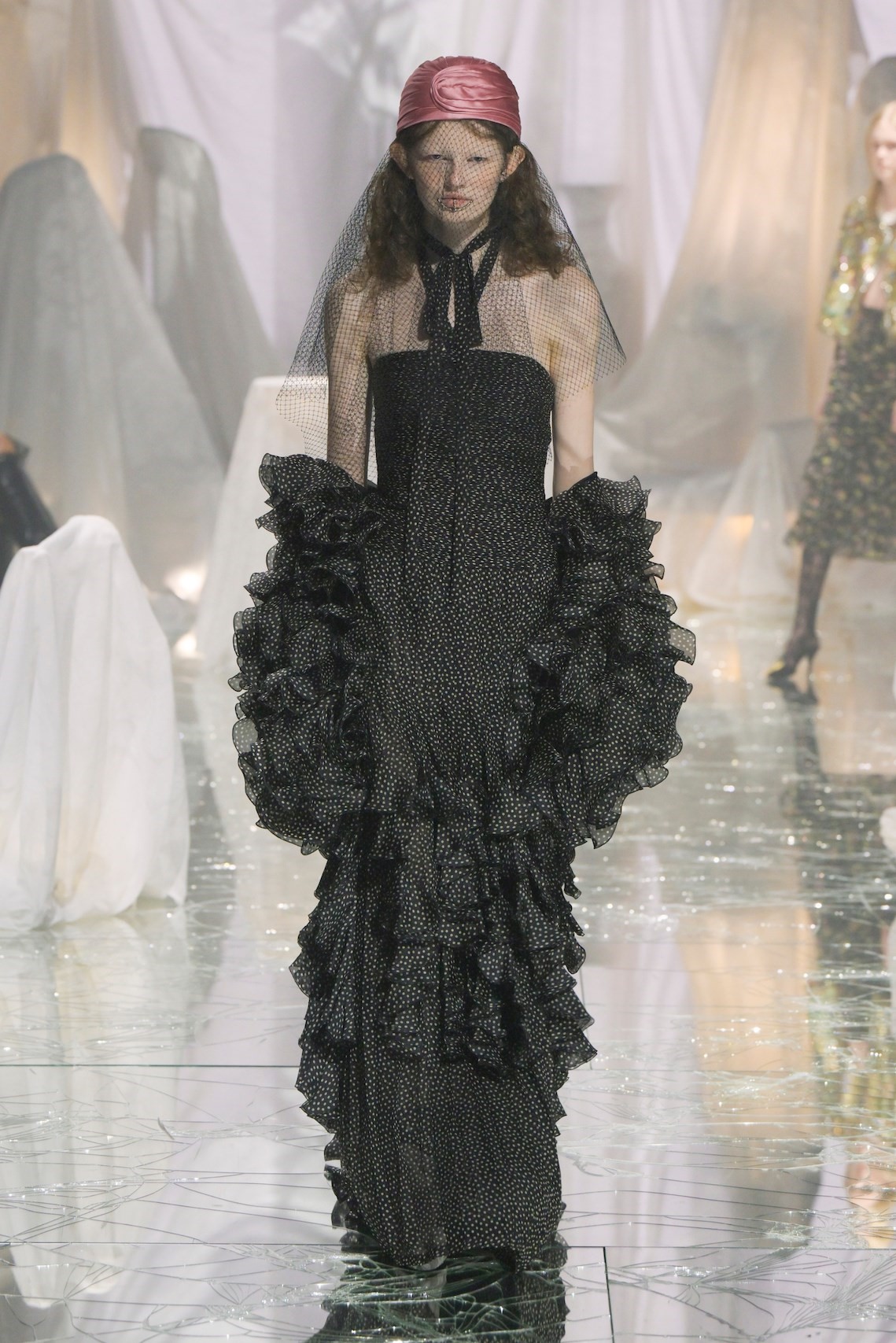
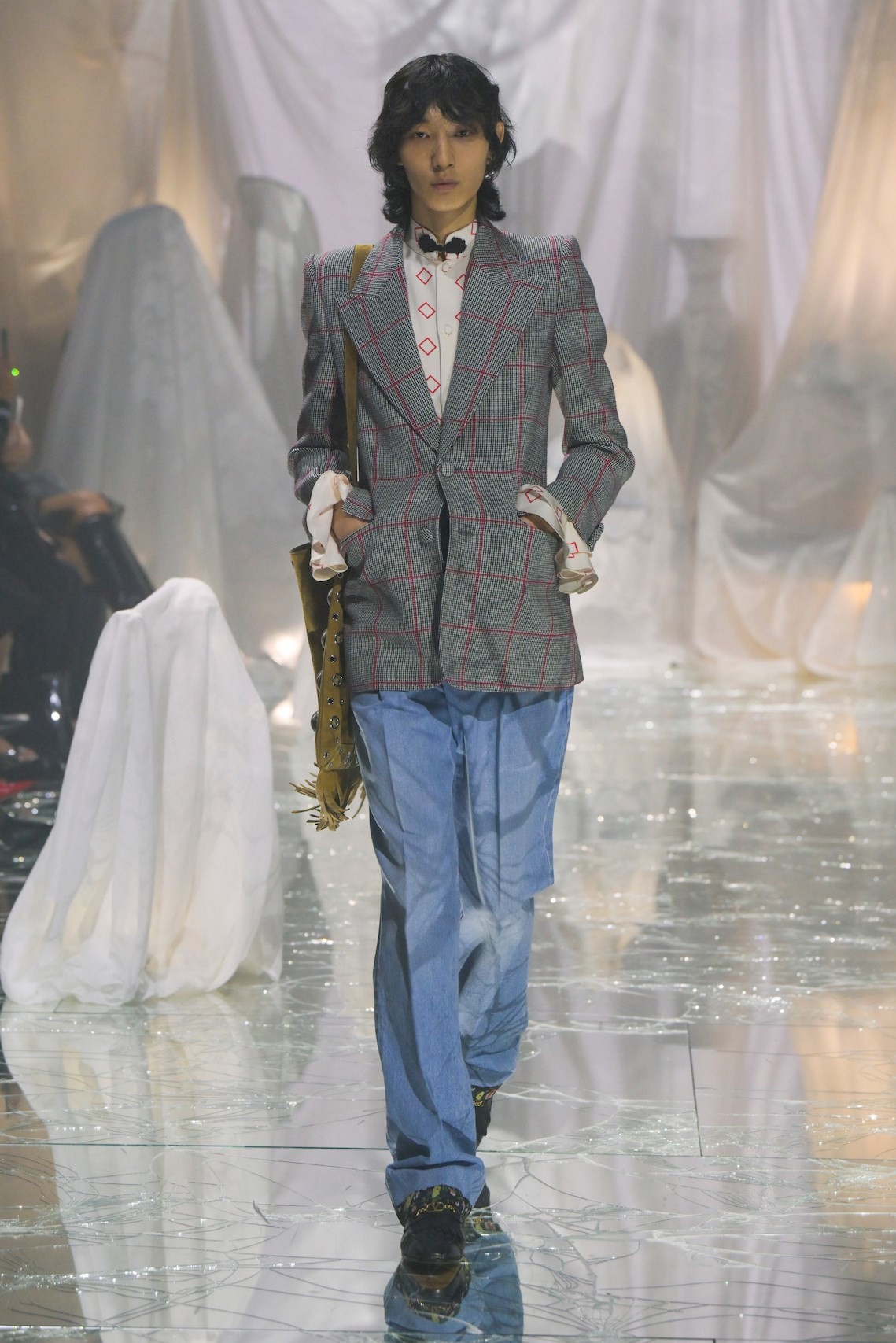
“I think polka dots are rebellious,” Michele said, epitomising his unexpected approach to those well-known Valentino tropes. He was also into lots of bows, and broad-brimmed hats – his favourite example was Valentino-ish rather than an actual historical example, although he said ones in the archives were far bigger than his (he’s right: I’ve seen them, and they’re roughly the size of coffee tables). He also loved ruffles and pleats. “Some of them are unruly,” he said.
That was where a lot of the impact came from here, with Michele toying with these familiar ideas and making them seem new, even strange. That came in the mix of items – the painstakingly precise, even pernickety Mr Valentino, who as a five-year-old once apocryphally cried until he vomited when his mother tried to make him wear a “coarse” butterfly bow-tie with his brass-buttoned navy blazer. His sensibility could never clash, say, a plissé chiffon bustier, satin turban and worn-out denims. But the freshness was more than simply the juxtaposition pieces – it was also in his curation and reconfiguration of pieces that hew to the spirit of Valentino’s heritage, but with Michele’s personal vigour. “I wanted to tell new generations it’s possible to be weirdly chic,” Michele said.
Weird was never part of Valentino’s vocabulary of beauty – so, perhaps, that’s what Michele is bringing to his reconsideration of Valentino’s iconography. He said he wanted to look at pieces that had been forgotten – which he did, until the internet turned everyone into sleuths to uncover his rich tapestry of references. But thinking of the women who originally wore those gorgeous clothes, and if their lives, I think brought you closer to Michele’s intention than just their glittering surfaces. “Touching his creations, I realised he was aware of the preciousness of life,” said Michele. “It’s a reflection on me Valentino’s work, on human finality, which is somehow lightened by clothes.”
There was a sense here of these past pieces being brought back to glorious life, re-energised, unburdened by the weight of their history. Michele quoted Théophile Gautier (lightweight!): “The truly beautiful is that which serves no purpose.” But Michele sees nourishing happiness as a purpose in itself. “Frivolousness is not useless,” he stated, in simple contradiction. Then he put a ruffle on it, and tied it up with a bow.
